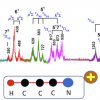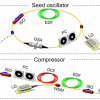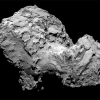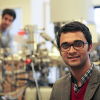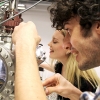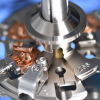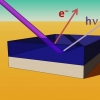Spectroscopy News
Pages
Researchers in Beijing have obtained new energy readings for cyanoacetylene molecules using ZEKE spectroscopy, with significant implications for understanding the electronic structure of organic molecules.
Graphene Flagship researchers have developed an optical fibre laser that emits pulses with durations equivalent to just a few wavelengths of the light used. This fastest ever device based on graphene will be ideal for use in ultrafast spectroscopy, and in surgical lasers that avoid heat damage to living tissue.
GC-MS results from the Philae lander module from the Comet 67P/Churyumov-Gerasimenko have have revealed several differences from previous observations of comets and from current models.
Thanks to MALDI-MS imaging, scientists have discovered how earthworms can digest plant material, such as fallen leaves, that would defeat most other herbivores.
Scientists at Loughborough University hope their early trials of a new technique based on LIBS could assist a crackdown on stone theft.
Diseases like Alzheimer’s are caused when proteins aggregate and clump together. Using atomic force microscopy and infrared spectroscopy, EPFL scientists have successfully distinguished between the disease-causing aggregation forms of proteins. The finding can help change pharmaceutical treatment of neurodegenerative diseases.
LC/MS-MS method enables highly sensitive detection for animal species verification in Halal foods.
UCLA, USA, are combining Raman microscopy with scanning electron microscopy (SEM) to study archaeological textiles and fibres.
Mark Venske has joined Block Engineering as the new Vice President of Sales and Marketing.
Synchrotron X-ray imaging of rocks is heping to save papers of the past.
Using ultrafast spectroscopy EPFL scientists have given a boost for spintronic technologies, showing that electrons can jump through spins much faster than previously thought.
Nano-Spectroscopy and Bio-Imaging is a free-to-attend conference in October 2015 held in Coventry, UK.
Guided Wave has hired Debra Hallto in the position of VP Sales & Marketing.
Laser ablation resonance ionisation mass spectrometry may be the answer to ageing rocks found during space missions to the Moon or other planets.
Silver is often used as a coating on medical equipment used for chemotherapy, but this silver coating can break down drugs. With the help of XPS, researchers have found a graphene coating that will help boost the effect of chemotherapy.
The US Naval Research Laboratory has a new Local Electrode Atom Probe instrument to help in the engineering of new materials.
The Center for Structural Biology and Bioinformatics at the Free University of Brussels (Université Libre de Bruxelles, ULB) has developed expertise in the analysis of biological molecules using infrared spectroscopy. Now, with the help of Scottish microarray instrumentation company, Arrayjet, the Center has integrated microarray technology to speed up and enhance the analysis of bio molecules such as proteins, which are exposed to hundreds of experimental conditions on a single chip using infrared imaging.
X-ray spectroscopy at BESSY II reveals inhomogenous distribution of chlorine in a special class of perovskite materials, which could help enhance efficiencies of perovskite thin film solar cells by controlled processing to optimise the chlorine distribution.
Agilent Technologies and the Bioprocessing Technology Institute (BTI), a research institute of Singapore’s Agency for Science, Technology and Research (A*STAR), have announced that they will collaborate on new analytical approaches to analysing specific protein-linked sugar compounds.
Agilent Thought Leader Award supports search for biomarkers to better predict side effects of new medicines.

